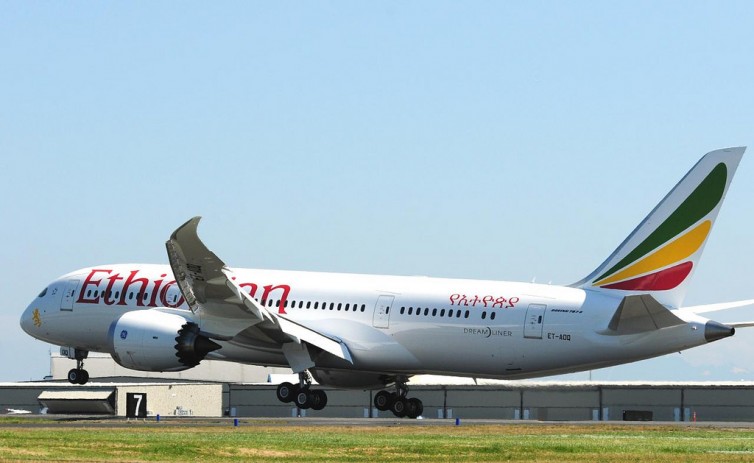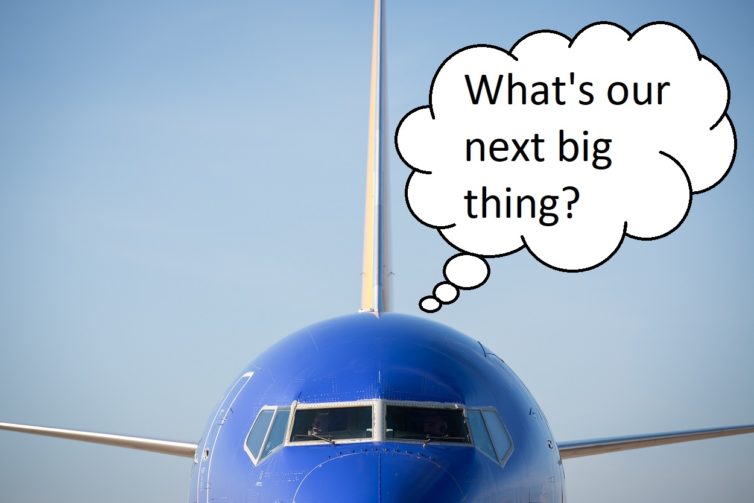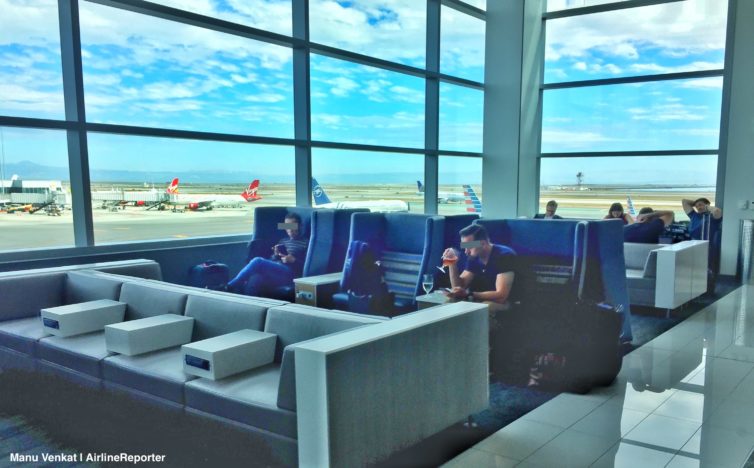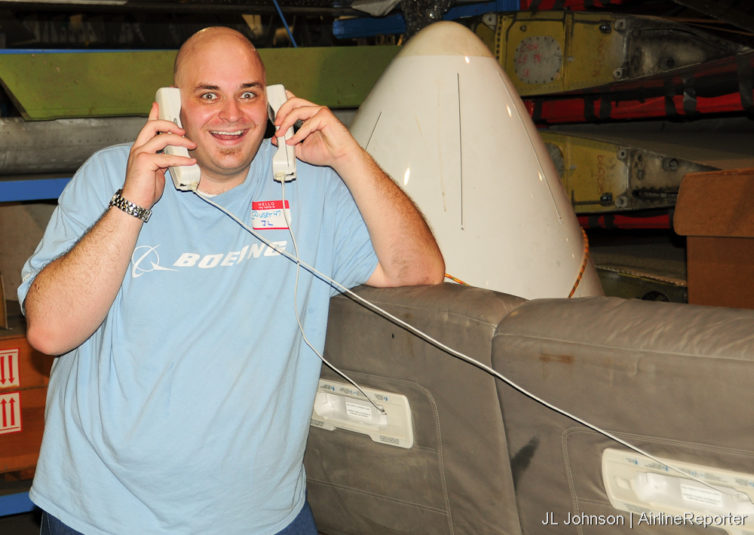Time to talk about a part of the world we don’t get to write about often: Africa! European and Asian airlines handle the lion’s share of the continent’s long-haul air traffic. But recently we’ve seen Africa’s own carriers make impressive strides. Royal Air Maroc is using its Dreamliner fleet to operate long thin routes to multiple continents. Kenya Airways recently inaugurated direct service to New York. South African Airlines may be dealing with financial struggles, but remains a juggernaut of the region.

Ethiopian Boeing 787 Dreamliner (ET-AOQ) taken in July 2012 by Moonm
But among the large African carriers, arguably none had a year as big last year as Ethiopian Airlines. Its fleet has been growing by leaps and bounds, and includes fresh faces like the Boeing 787 Dreamliner and Airbus A350. The airline has been launching new long-haul routes to destinations like Manchester and Chicago, and this just week it announced it’s bumping up frequencies to Washington DC and Chicago and adding service to Houston, though it’s cutting its LAX route. Despite the airline’s growth and transformation, it’s continued to do well in ratings (at least those from sites like Skytrax) and in showcasing the culture and food of its home country.
Read on for an update on Ethiopian Airlines’ major expansion and why the airline is relevant to you, even if you live in the US.

What’s next for Southwest Airlines? – Original Photo: Stephen M. Keller for Southwest Airlines
In 2016, I wrote a piece titled Nine Reasons Why I Think Southwest is the Best. For me, those nine reasons stand, even today. I still fly Southwest enough to renew my A-List elite flyer status annually. They are still my first choice when booking travel. There was a time not long ago that I would go out of my way to fly Southwest, and the overwhelming majority of my 20-30 trips a year were with the LUV airline. However, I would be remiss not to recognize that my mix of airlines flown is increasingly more diverse.
The airline’s piece of my overall business has been shrinking. This is a trend that I’ve been cognizant of on the periphery for a few years now. It is something I have long ignored because so much of what makes me an AvGeek is tied to my love, study, and ridership of Southwest. Many of my best aviation memories are linked to the airline. In December of 2017, I finished my most recent academic pursuit and received an M.A. in Organizational Leadership. My academic team and I frequently joked I minored in “Southwest Airlines” because so many of my projects focused on the company, their culture, and leadership philosophy. All of this, plus gobs of friends who are Southwest employees, I honestly feel as if I’m an honorary part of the family.
Here’s the tough question: If Southwest is always my first choice when picking a flight, why am I riding the other guys with more frequency? I have given this a lot of thought and I don’t think that this trend is because Southwest is doing anything particularly wrong. Rather, I think the competition has, in some cases, become way more competitive.
I have long kept a wishlist for the airline. Perhaps the implementation of a few of these would help the airline pull ahead of the competition where, in my mind, they have historically always been. Without further ado, my wishlist, presented in David Letterman-reverse countdown style.
Way back in April 2010, I had this crazy idea to put snippets of airliner pictures out there, asking you to guess the livery. Then I got a bit more creative with showing different parts, angles, designs etc. Then I totally just stopped. I am not fully sure why. Maybe because I was getting jealous that many of you knew liveries way better than I did, or the fact that this setup actually takes quite a bit longer to get published as a story than one might think. No matter the reason… IT’S BACK!!!
Take a good look at the photos below and see below to learn how the game works. Hey, if you guess enough, maybe I will mail you a few sweet AirlineReporter stickers!
Rules are easy. In the comments, list the airline AND/OR aircraft type for each photo. Some are easy. Some might be nearly impossible. If you only know a few, that is okay, leave your answers in the comments. The big thing is no cheating, such as Google image search or looking at other people’s comments before you make your guess (often people are wrong anyhow).
Don’t feel bad if you only know a few (or even one). I think if I wasn’t the one making this, I would get half at best (okay, maybe only 25%). Then next week, I will share the full photos and see who won! And by win, if you had fun, I will send you some stickers! Good luck!

I’m biased as a Bay Area resident, but I think San Francisco SFO offers some of the best casual plane-spotting in the country, thanks to its two set of parallel runways located relatively close to the terminal buildings. Many of the airport’s premium lounges are located on the floor above the general concourse, giving lucky lounge-goers some especially good views. As if the lounge life wasn’t already awesome enough.
Delta doesn’t have a formal hub in San Francisco. But as an endpoint of the airline’s premium transcontinental service from New York JFK, SFO is important enough to earn a Delta Sky Club. I dropped by recently and found a lot to like, from fresh decor and furniture, solid food and drink, and (most importantly) great views of the ramp and runways through floor-to-ceiling windows. Read on for an overview of what you can expect if you drop by Delta’s Sky Club at SFO.

JL, a self-described “fat flyer” at an AvGeek event in 2012 when he was near his peak weight
This is a piece I’ve written, trashed, and rewritten multiple times over the years. In fact, my notes on the topic date back as far as 2012, shortly after joining AirlineReporter. This is a tough subject to discuss, and it is indeed not easy to put one’s self “out there” for commentary by the general (sometimes harsh) public. Twice in prior pieces, I have dipped my toes into discussing weight issues. First when I mentioned my need for a seat belt extender on a Frontier airlines flight review years ago. And again when writing about my first 5K. Both pieces spurred unacceptable, rude, ’œfat-shaming’ comments which were deleted.
For years this polarizing and real issue has lacked balance and a fundamental perspective: that of the so-called fat flyer. As a frequent traveler who came uncomfortably close to dreaded the “passenger of size” classification, it’s time to add some commentary. So, I’m taking one for the team. Just a quick note – this post uses adjectives that could be perceived as derogatory towards fat flyers. I am intentionally using these to help readers understand the words we so frequently hear. These are my opinions and generalizations. As I’ve noted, this is a sensitive issue, and everyone’s experiences and situations are unique. No disrespect intended.
Welcome on board. You are the last passenger to join us on our Southwest plane. As frequently happens, the middle seat next to me is the last one available on our sold out flight. The armrest which is generally considered to be the personal space boundary between us goes down, barely. I am 6’1″ and medically classified as morbidly obese, or worse. I also manage to squeeze into my seat without a seatbelt extender. Southwest, as it turns out, has generously accommodating seatbelts across their fleet.
Just like those before you, you size me up then look around for better accommodations. This on-the-fly appraisal is something I’ve been through multiple times on this flight alone and something I will encounter hundreds of times throughout the year as I eventually requalify for my elite flyer status. Finally, you come to terms with the fact that you’re stuck with me for the next hour or two.
This is the beginning of your inconvenience.












